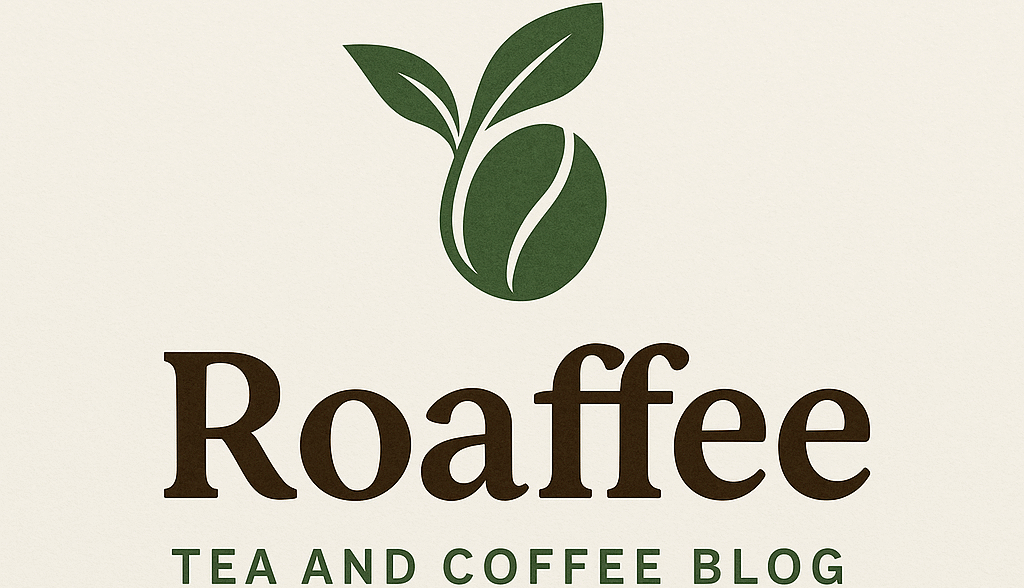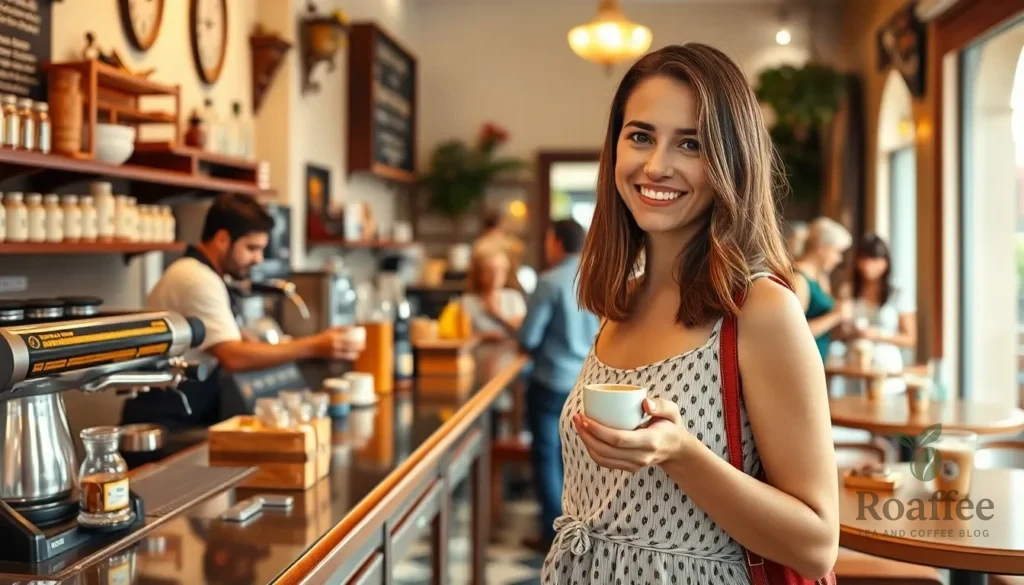We’ve all been there – standing in a bustling Italian café, overwhelmed by the rapid-fire Italian and unsure whether to ask for a cappuccino or risk ordering something completely different. Ordering coffee in Italy isn’t just about getting your caffeine fix; it’s about embracing a cultural ritual that locals have perfected over centuries.
Italian coffee culture runs deep, with unwritten rules that can make or break your authentic experience. From the morning cappuccino etiquette to the afternoon espresso tradition, understanding these customs will transform you from a confused tourist into someone who confidently navigates Italy’s vibrant coffee scene.
We’ll guide you through the essential phrases, timing, and cultural nuances that’ll have you ordering like a true Italian. Whether you’re planning your first trip to Rome or you’re a seasoned traveler looking to refine your coffee game, mastering these simple techniques will unlock authentic connections with locals and elevate every café visit into a memorable cultural experience.
Essential Italian Coffee Vocabulary
Mastering key Italian coffee terms transforms your café experience from tourist confusion to confident ordering. These essential phrases serve as your foundation for authentic Italian coffee culture immersion.
Basic Coffee Terms
Caffè – The cornerstone of Italian coffee culture, this term refers to a standard espresso shot. When you order “un caffè” you receive a small, intense shot of espresso served in a ceramic cup.
Cappuccino – A morning-only beverage combining espresso with steamed milk foam in equal parts. Italians consider ordering cappuccino after 11 AM a cultural misstep.
Caffè Latte – A larger drink with more steamed milk than cappuccino, typically served in a glass. This remains primarily a breakfast beverage in Italian tradition.
Macchiato – An espresso “marked” with a small dollop of steamed milk foam. The traditional version differs significantly from international coffee chain interpretations.
Corretto – An espresso “corrected” with a splash of grappa, brandy, or sambuca. This alcoholic coffee variation appears mainly as an after-meal digestif.
Americano – Hot water added to espresso to create a longer, milder coffee. Many Italian cafés now offer this option to accommodate international preferences.
Ordering Phrases
“Vorrei un caffè, per favore” – “I would like a coffee, please.” This polite formula works for any coffee order when you substitute the exact drink name.
“Posso avere un cappuccino?” – “May I have a cappuccino?” This question format shows respect for Italian service customs.
“Un caffè al banco” – “A coffee at the counter.” Standing at the bar typically costs less than table service in Italian cafés.
“Quanto costa?” – “How much does it cost?” Essential for understanding pricing, especially when choosing between counter and table service.
“Con zucchero” – “With sugar.” Sugar packets or dispensers appear standard at Italian coffee bars.
“Senza zucchero” – “Without sugar.” Specify this preference when you want your coffee unsweetened.
Polite Expressions
“Buongiorno” – “Good morning.” Essential greeting when entering a café before noon, showing respect for Italian social customs.
“Buonasera” – “Good evening.” Appropriate greeting for afternoon and evening café visits.
“Grazie” – “Thank you.” Basic courtesy that Italian café staff appreciate from international visitors.
“Prego” – “You’re welcome” or “Please.” Baristas often use this when serving your order or inviting you to proceed.
“Scusi” – “Excuse me.” Useful for getting attention or apologizing for minor mishaps like bumping into someone.
“Arrivederci” – “Goodbye.” Polite farewell when leaving the café, maintaining positive interaction standards.
Types of Italian Coffee
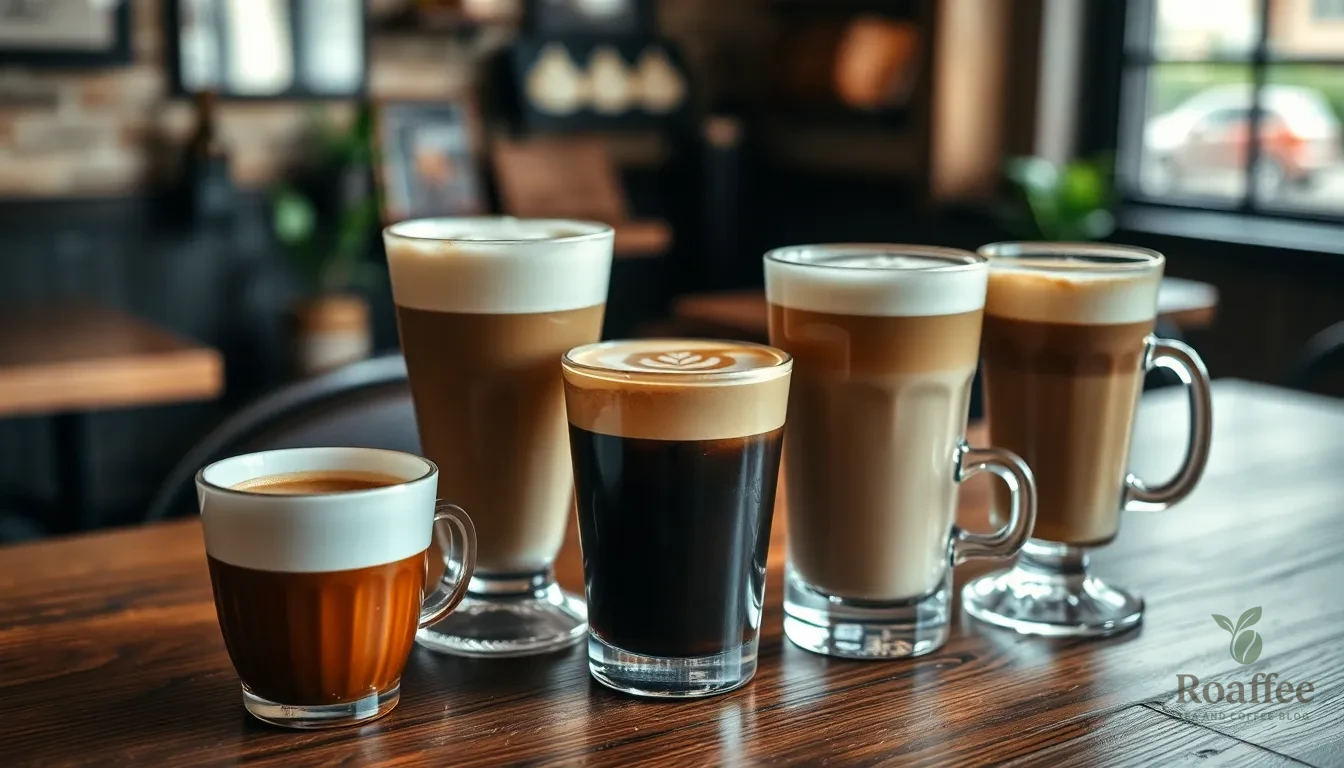
Now that we’ve covered the essential vocabulary let’s explore the diverse industry of Italian coffee drinks. Each type offers a unique experience rooted in centuries of tradition and regional preferences.
Espresso
Espresso forms the foundation of Italian coffee culture and serves as the base for nearly every other coffee drink. We order this classic by simply saying “un caffè” or “un espresso” to receive a small concentrated shot of coffee. The espresso delivers intense flavor and rich aroma in just a few sips. Italians enjoy this powerful brew throughout the day as a quick energy boost at the bar counter.
Cappuccino
Cappuccino combines espresso with steamed milk and a thick layer of foam creating the perfect morning beverage. We typically order this drink only before 11 AM as Italians consider it inappropriate to consume milk-based coffee after meals or later in the day. The barista often tops our cappuccino with a delicate sprinkle of cocoa powder or chocolate adding subtle sweetness to complement the robust espresso base.
Caffè Latte
Caffè Latte blends espresso with steamed milk but differs significantly from American versions by being smaller and less foamy. We receive this drink in a glass rather than a large mug making it perfect for those who prefer a milder coffee experience. The milk integration creates a smooth creamy texture that balances the espresso’s intensity without overwhelming the coffee flavor.
Macchiato
Macchiato literally means “stained” and describes espresso marked with just a small splash of milk foam or steamed milk. We order this drink when we want espresso with just a touch of creaminess rather than a full milk-based beverage. The minimal milk addition softens the espresso’s edge while maintaining its bold character and concentrated flavor profile.
Americano
Americano consists of espresso diluted with hot water creating a lighter coffee similar to drip coffee but with a thinner consistency. We choose this option when we prefer a larger volume of coffee with less intensity than straight espresso. This drink originated during Industry War II when American soldiers diluted Italian espresso to match their familiar coffee preferences.
Regional Specialties
Regional specialties showcase Italy’s diverse coffee traditions and local preferences across different areas. We can order a Marocchino which combines espresso with cocoa powder or hot chocolate topped with foam for a rich chocolatey experience. Caffè Lungo offers a longer espresso extraction with more water making it less intense while Caffè Doppio provides double the espresso for those seeking extra strength.
Caffè Corretto adds a shot of liquor typically grappa to espresso creating a spirited afternoon pick-me-up. Caffè Corto delivers a shorter espresso extraction resulting in stronger aroma and taste but paradoxically less caffeine content. Decaffeinato provides the full espresso experience without caffeine for those sensitive to stimulants or enjoying evening coffee.
| Coffee Type | Description | Best Time to Order |
|---|---|---|
| Espresso | Small concentrated shot | Anytime |
| Cappuccino | Espresso with steamed milk and foam | Morning only (before 11 AM) |
| Caffè Latte | Espresso with steamed milk | Morning preferred |
| Macchiato | Espresso with small milk splash | Anytime |
| Americano | Espresso diluted with hot water | Anytime |
| Marocchino | Espresso with cocoa and foam | Afternoon |
| Caffè Corretto | Espresso with liquor shot | Afternoon/Evening |
Italian Coffee Culture Rules
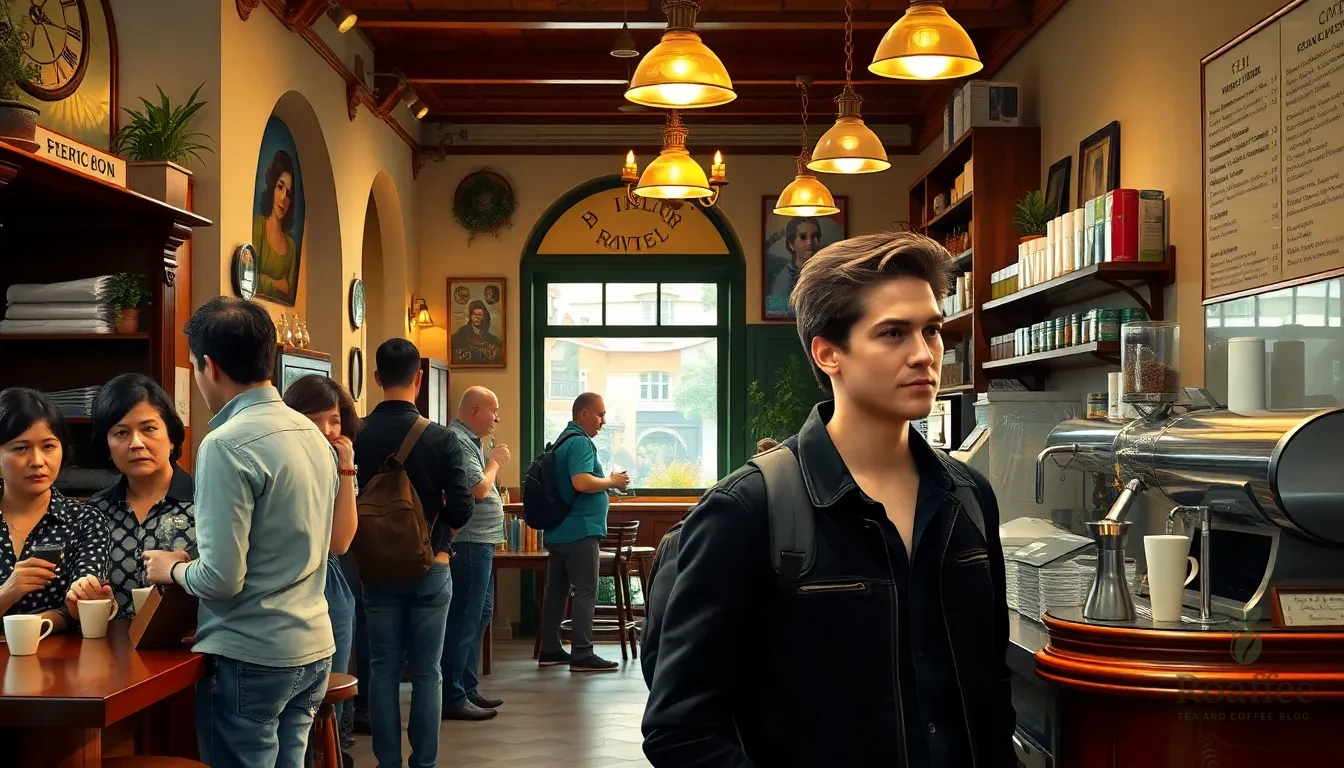
Understanding Italian coffee culture goes beyond knowing the drinks—it involves mastering the unwritten rules that govern when, where, and how Italians enjoy their coffee. We’ll explore the essential customs that will help you blend in seamlessly with local coffee traditions.
Timing Your Coffee Order
Italians follow strict timing conventions when it comes to coffee consumption. Mornings represent the prime time for coffee, often paired with a pastry like a cornetto as you start your day. The cappuccino rule stands as perhaps the most important timing guideline we need to follow—avoid ordering cappuccino after 11 a.m. since Italians regard it as a breakfast drink only.
Espresso remains the preferred choice throughout the day, while milk-based drinks like cappuccino or caffè latte are mainly morning beverages. This timing etiquette reflects the Italian belief that milk interferes with digestion after meals, making afternoon cappuccinos a cultural misstep that immediately identifies tourists.
Standing vs. Sitting
The choice between standing and sitting affects both your coffee experience and your wallet in Italian cafés. Most Italians choose to stand at the bar counter (called al banco) for their coffee ritual, especially when drinking espresso as a quick shot.
| Standing at the Bar (al banco) | Sitting at a Table (al tavolo) |
|---|---|
| Most common and traditional | Less common, usually in tourist areas |
| Coffee is cheaper | Usually more expensive |
| Order and drink quickly | You can linger and people-watch |
| No waiter service; order at the bar | Waiter service available |
Standing at the bar allows you to consume your coffee quickly and authentically, while sitting at a table costs more but provides the opportunity to relax and observe Italian daily life. Drinking coffee to go remains uncommon since Italians prefer enjoying their coffee fresh and on the spot.
Payment Etiquette
Italian coffee bars operate with two main payment systems that we should understand before ordering. The first approach involves paying at the register first, then showing your receipt to the barista when ordering your coffee at the bar. The second method allows you to order coffee at the bar and pay afterward on your way out.
Both payment methods are accepted throughout Italy, but paying after drinking is more common among locals and creates a more natural flow. When you pay first, keep your receipt ready to show the barista as proof of payment. When standing at the bar, expect to consume your coffee quickly, then settle your bill before leaving the establishment.
Step-by-Step Ordering Process
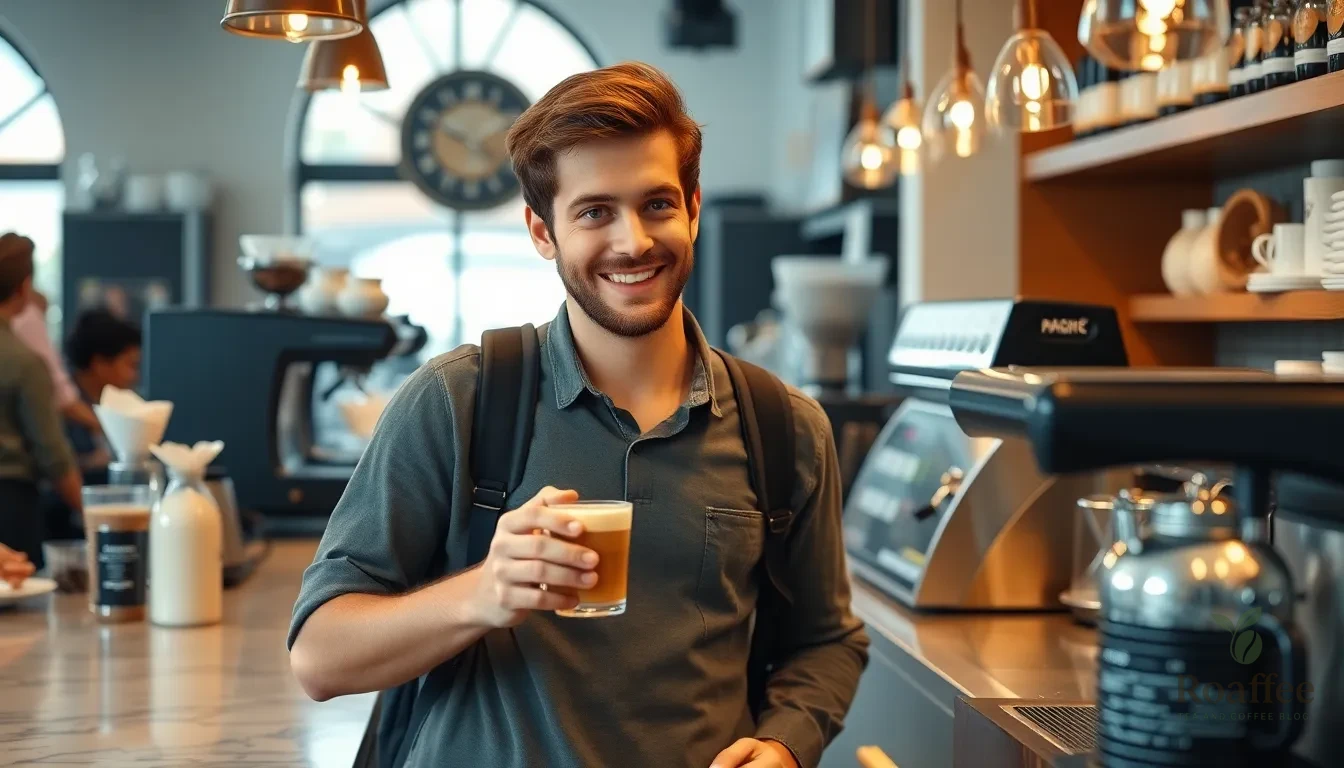
Mastering the art of ordering coffee in Italy requires understanding the proper sequence and etiquette. We’ll walk you through each stage of this cultural ritual to ensure your café experience feels authentic and confident.
Entering the Bar
We begin our Italian coffee journey by walking into a coffee bar, which locals simply call a “bar.” This term differs from American usage and refers specifically to a café. Upon entering, we greet everyone with a friendly “Buongiorno” (Good morning), addressing both the barista and fellow patrons. This polite acknowledgment represents customary Italian behavior and immediately establishes us as respectful visitors who understand local customs.
Approaching the Counter
We typically order our coffee at the counter where we’ll also consume it while standing. This traditional approach represents the most authentic Italian coffee experience. Some establishments require us to pay at a cash register first, receive a receipt, then present it to the barista for coffee preparation. We should note that Italians rarely take coffee to go, as the drink is meant to be savored fresh on the spot. Standing at the counter allows us to engage with the barista and observe the artistry of Italian coffee preparation.
Placing Your Order
We use simple, polite phrases to communicate our coffee preferences effectively. The phrase “Vorrei un…” (I would like a…) followed by our coffee choice creates the foundation of our order. For example, we might say “Vorrei un caffè, per favore” when requesting an espresso. Adding “per favore” (please) demonstrates proper etiquette and respect for Italian customs. When ordering multiple coffees, we use plural forms such as “due caffè” to specify quantity clearly.
Receiving Your Coffee
We pay for our order if we haven’t already completed this step at the register. The barista prepares and hands us our coffee directly at the counter, where we consume it immediately. Espresso arrives in a small cup and should be enjoyed quickly while standing, following traditional Italian practice. If we prefer to sit, we politely ask before or after ordering, though table service is less common and may involve additional charges. This final step completes our authentic Italian coffee experience, allowing us to savor both the beverage and the cultural moment.
Common Mistakes to Avoid
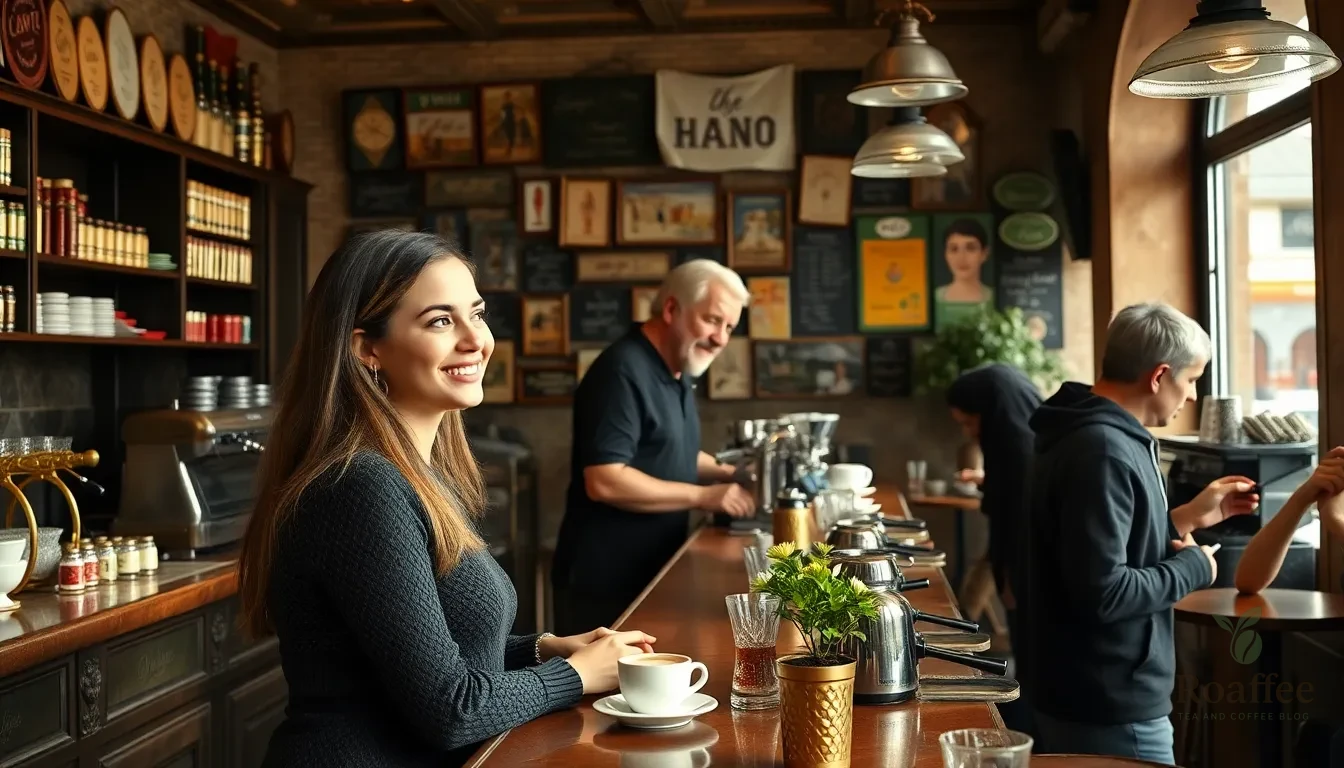
Even well-intentioned travelers can stumble into coffee culture pitfalls that mark them as tourists. We’ve identified the most frequent missteps that can turn your authentic Italian coffee experience into an awkward encounter.
Timing Errors
Ordering cappuccino after 11 a.m. stands as the cardinal sin of Italian coffee culture. Italians reserve milk-based coffees exclusively for breakfast hours because they believe milk interferes with digestion later in the day. We recommend switching to espresso or macchiato for your afternoon caffeine fix.
The breakfast boundary extends beyond cappuccino to all milk-heavy drinks. Caffè latte faces the same time restrictions as cappuccino in traditional Italian establishments. Baristas may serve these drinks later in the day but locals will notice your timing error immediately.
Ordering Faux Pas
Requesting large or to-go coffees violates fundamental Italian coffee principles. Italian espresso servings are intentionally small and concentrated for maximum flavor impact. Asking for coffee “porta via” (to take away) draws disapproving looks from both baristas and locals who view this as rushing through a cherished ritual.
Complicated coffee orders featuring multiple modifications confuse Italian baristas who excel at perfecting simple classics. We suggest sticking to traditional options like espresso or cappuccino rather than requesting elaborate customizations common in other countries. Speaking rudely or skipping polite phrases like “per favore” demonstrates cultural insensitivity in a society that values courtesy around coffee service.
Sitting at tables without ordering at the counter first creates confusion about service protocols. Many Italian bars operate on a counter-first system where you place your order while standing before claiming table seating.
Cultural Misunderstandings
Coffee drinking in Italy functions as a quick social ritual performed standing at the bar rather than a prolonged casual experience. Tourists who expect to linger over coffee for extended periods misunderstand the cultural purpose of these brief but meaningful interactions. We observe that locals typically finish their espresso within minutes while captivating in brief conversations with baristas or fellow patrons.
The coffee bar serves as a community gathering space where speed and efficiency maintain the social flow. Baristas and locals may judge tourists who ignore these customs though they will still prepare orders professionally. Observing local behaviors before ordering helps you blend into the natural rhythm of Italian coffee culture.
Using simple Italian phrases enhances your experience and demonstrates respect for local traditions. We find that even basic attempts at the language earn appreciation from coffee bar staff who recognize your effort to engage authentically with their culture.
Regional Variations
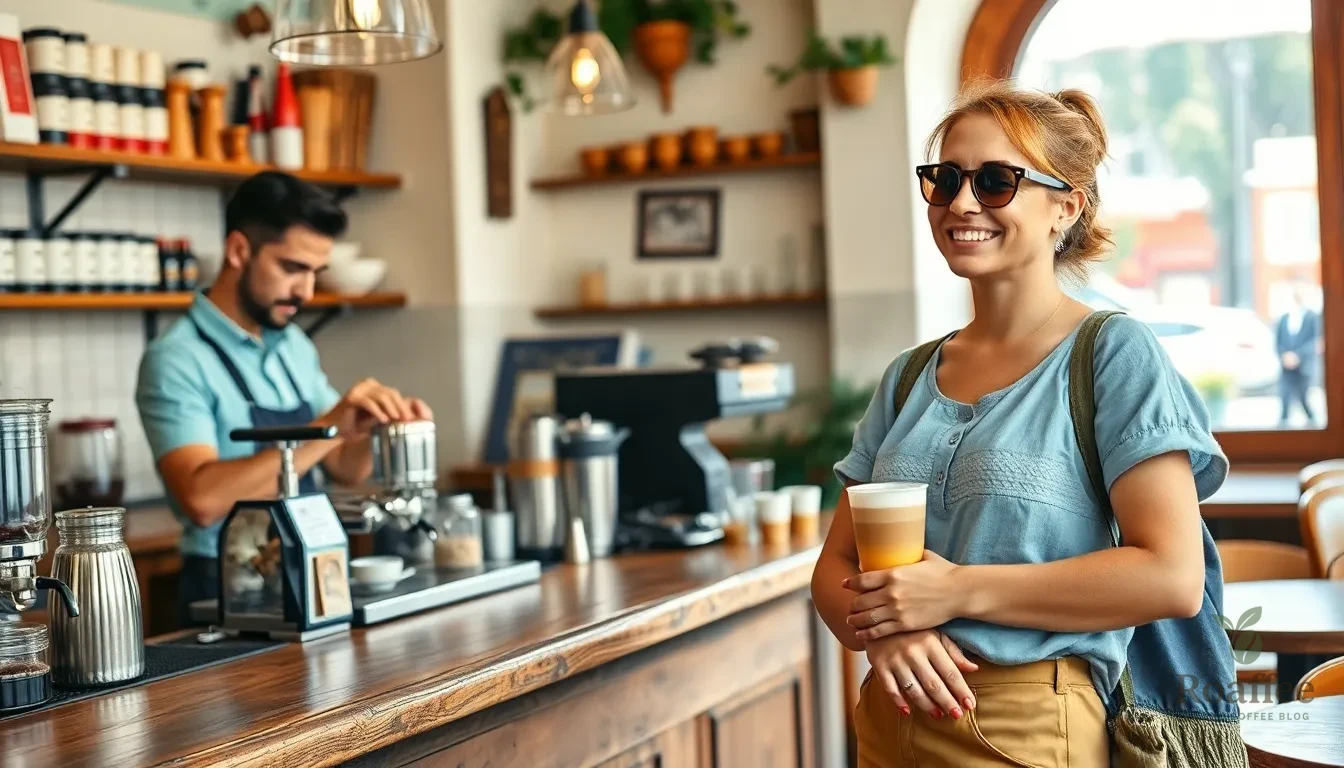
Italy’s coffee culture shifts dramatically from region to region, creating unique experiences we can discover throughout our travels. Understanding these regional differences helps us appreciate the rich diversity of Italian coffee traditions and order with confidence no matter where we find ourselves.
Northern Italy
We’ll find coffee culture in Northern Italy embraces more experimental approaches compared to other regions. Cities like Verona and Bolzano commonly serve espresso with a touch of milk or cream, creating a gentler experience than the robust southern style.
Un caffè corretto becomes particularly popular in this region, featuring espresso enhanced with a splash of liquor like grappa or brandy. We can confidently order this variation throughout the day, especially during colder months when locals appreciate the warming effect.
Northern establishments often display more flexibility with coffee variations and add-ins. We might encounter baristas who accommodate special requests more readily than their southern counterparts, reflecting the region’s openness to coffee innovation.
Central Italy
Central Italy, anchored by Rome and Florence, maintains strict adherence to traditional espresso culture. We’ll experience the purest form of Italian coffee customs here, where un caffè means a single, perfect espresso shot served quickly at the bar.
The cappuccino rule remains absolutely sacred in this region, with locals consuming milk-based drinks exclusively before 11 a.m. We should expect raised eyebrows if we order cappuccino after lunch, as Central Italians view this as a serious breach of coffee etiquette.
Romans and Florentines favor rapid coffee consumption at the counter, treating their coffee break as a brief social ritual rather than a leisurely activity. We’ll notice locals finishing their espresso in just a few sips before continuing with their day.
Southern Italy
Southern Italy presents us with the most intense coffee experience, featuring stronger and sweeter preparations that reflect the region’s passionate approach to espresso. Naples stands as the epicenter of this robust coffee culture, where we can taste caffè alla napoletana, a thicker espresso style unique to the area.
We’ll discover that Southern Italians use more sugar in their coffee compared to other regions, creating a sweeter profile that balances the intense caffeine strength. The espresso shots here pack more punch, requiring adjustment for those accustomed to milder preparations.
| Region | Coffee Strength | Sugar Usage | Popular Variations |
|---|---|---|---|
| Northern Italy | Moderate | Light | Caffè corretto, milk additions |
| Central Italy | Traditional | Moderate | Classic espresso, morning cappuccino |
| Southern Italy | Strong | Heavy | Caffè alla napoletana, sweet espresso |
Milk-based drinks like cappuccino become increasingly rare after morning hours in Southern Italy, with locals showing even stronger preference for pure espresso throughout the day. We should embrace this tradition by ordering un caffè when visiting southern regions, experiencing the authentic intensity that defines this area’s coffee culture.
Practice Scenarios
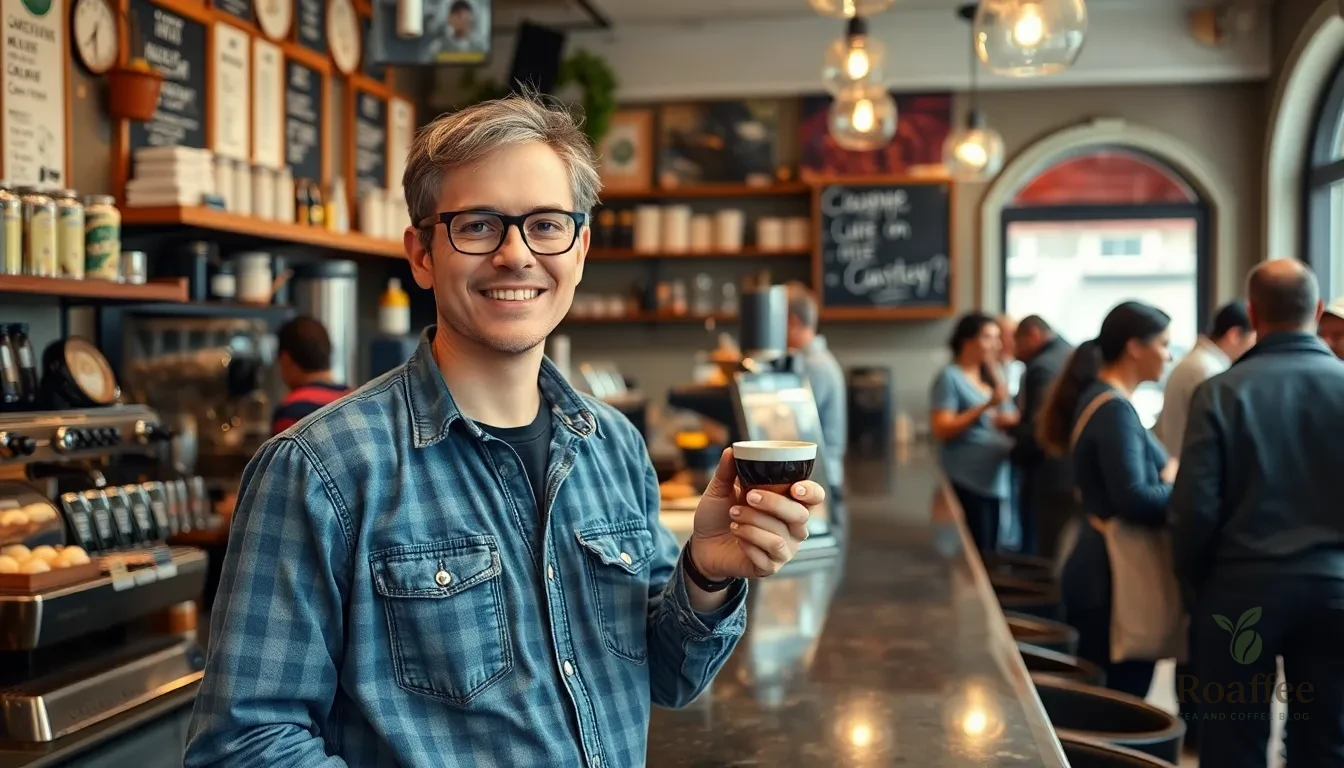
We will walk through real-industry coffee ordering situations to help you apply what you’ve learned. These scenarios mirror the experiences you’ll encounter throughout Italy.
Morning Coffee Run
We approach the bar counter and offer a friendly greeting.
“Buongiorno! Un caffè, per favore.”
Our barista prepares the espresso while we enjoy the small glass of water provided.
This palate cleanser is a traditional touch that enhances the coffee experience.
For those seeking a frothier option, we can order a cappuccino before 11 am.
“Vorrei un cappuccino, grazie.”
We consume our coffee quickly while standing at the counter.
This authentic approach mirrors how locals start their day and costs less than table service.
After finishing, we express gratitude and prepare to leave.
“Grazie mille! Buona giornata!”
Afternoon Break
We enter the bar and notice the shift from coffee to alcoholic drinks.
Many locals now order wine or aperitifs, but coffee remains available.
We order an espresso rather than milk-based drinks.
“Un caffè, per favore.”
If we prefer sitting, we ask about table service.
“Posso sedermi al tavolo?” (May I sit at the table?)
We understand that table service typically includes an extra charge.
This surcharge applies especially for outdoor seating areas.
We observe the social atmosphere as locals gather at the counter.
The afternoon coffee break becomes a brief social ritual before returning to work.
Tourist Areas vs. Local Bars
The coffee experience varies significantly between tourist zones and authentic local establishments.
| Aspect | Tourist Areas | Local Bars |
|---|---|---|
| Coffee Style | Larger, non-traditional options available | Classic Italian espresso, small servings |
| Service | More likely to offer to-go orders | Coffee consumed on-site only |
| Ordering | English accepted, table orders without extra charge | Counter ordering preferred, table service costs more |
| Atmosphere | Formal tourist experience | Social, fast-paced local interaction |
In tourist areas, we might find Starbucks-style options but sacrifice authenticity.
These locations cater to international preferences rather than Italian traditions.
Local bars provide the genuine Italian coffee experience.
We observe locals mingling at the counter and follow their lead for proper etiquette.
We carry cash in euros as some local establishments prefer it.
Card machines are common in major cities, but cash ensures smoother transactions.
We mimic local behavior to blend in seamlessly.
Watching where locals stand and how they order helps us navigate the cultural nuances successfully.
Conclusion
We’ve equipped you with everything you need to navigate Italy’s rich coffee culture like a local. From understanding the sacred morning cappuccino rule to mastering essential phrases and recognizing regional variations you’re now ready to confidently approach any coffee bar across the country.
Remember that ordering coffee in Italy isn’t just about the beverage—it’s about embracing a cultural ritual that connects you with centuries of tradition. Whether you’re standing at a bustling Roman counter or savoring an espresso in a quiet Tuscan café you’ll find that these skills open doors to authentic Italian experiences.
Your next coffee adventure awaits. Step into that local bar greet the barista with a warm “Buongiorno” and enjoy your perfectly ordered Italian coffee knowing you’re participating in one of Italy’s most beloved daily traditions.
Frequently Asked Questions
What is the most important rule about ordering cappuccino in Italy?
Never order cappuccino after 11 a.m. in Italy. Italians consider milk-based coffee drinks like cappuccino strictly morning beverages, typically consumed only with breakfast. Ordering cappuccino in the afternoon or evening is considered a cultural faux pas and will immediately identify you as a tourist.
How do you politely order coffee in Italian?
Start with “Buongiorno” (Good morning) and use “Vorrei un caffè, per favore” (I would like a coffee, please). Always say “Grazie” (Thank you) after receiving your order. These simple phrases show respect for local customs and help create a positive interaction with the barista.
Should I stand or sit when ordering coffee in Italy?
Standing at the bar is the traditional and more economical option preferred by locals. It’s also faster and allows for quick social interaction. Sitting at a table is acceptable but usually costs more and is less common for a quick coffee break.
What’s the difference between “caffè” and “espresso” in Italy?
In Italy, “caffè” refers to a standard espresso shot. When you order “un caffè,” you’ll receive what tourists call espresso. There’s no need to specify “espresso” – simply saying “caffè” will get you the classic Italian coffee experience.
Is it rude to take coffee to go in Italy?
While not necessarily rude, taking coffee to go isn’t traditional Italian behavior. Italians prefer to drink their coffee quickly at the bar, treating it as a brief social moment. Most coffee bars accommodate takeaway requests, but drinking on-site is more culturally authentic.
How is coffee different between Northern and Southern Italy?
Northern Italy offers more experimental coffee culture with drinks like “caffè corretto.” Central Italy, especially Rome and Florence, follows strict traditional espresso customs. Southern Italy serves stronger, sweeter coffee, with specialties like “caffè alla napoletana” being popular regional variations.
What are the most common coffee ordering mistakes tourists make?
The biggest mistakes include ordering cappuccino after morning hours, asking for complicated customizations, expecting large American-style portions, and not understanding the quick-service culture. Avoid lingering too long and don’t expect extensive menu explanations from busy baristas.
How much should I tip for coffee in Italy?
Tipping isn’t expected or necessary for coffee service in Italy. The price you pay covers the service, and leaving coins is optional. If you do tip, simply leave small change (10-20 cents) on the counter, but it’s not a cultural requirement.
